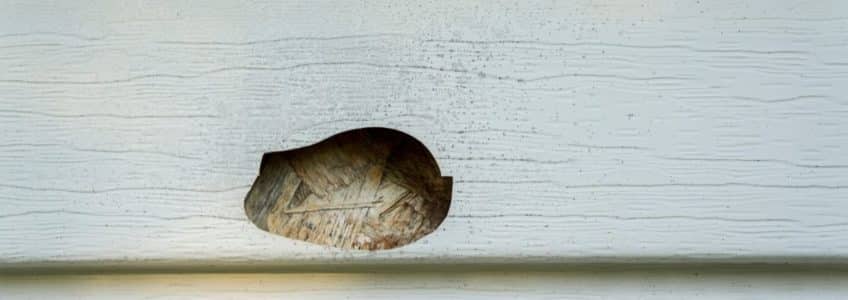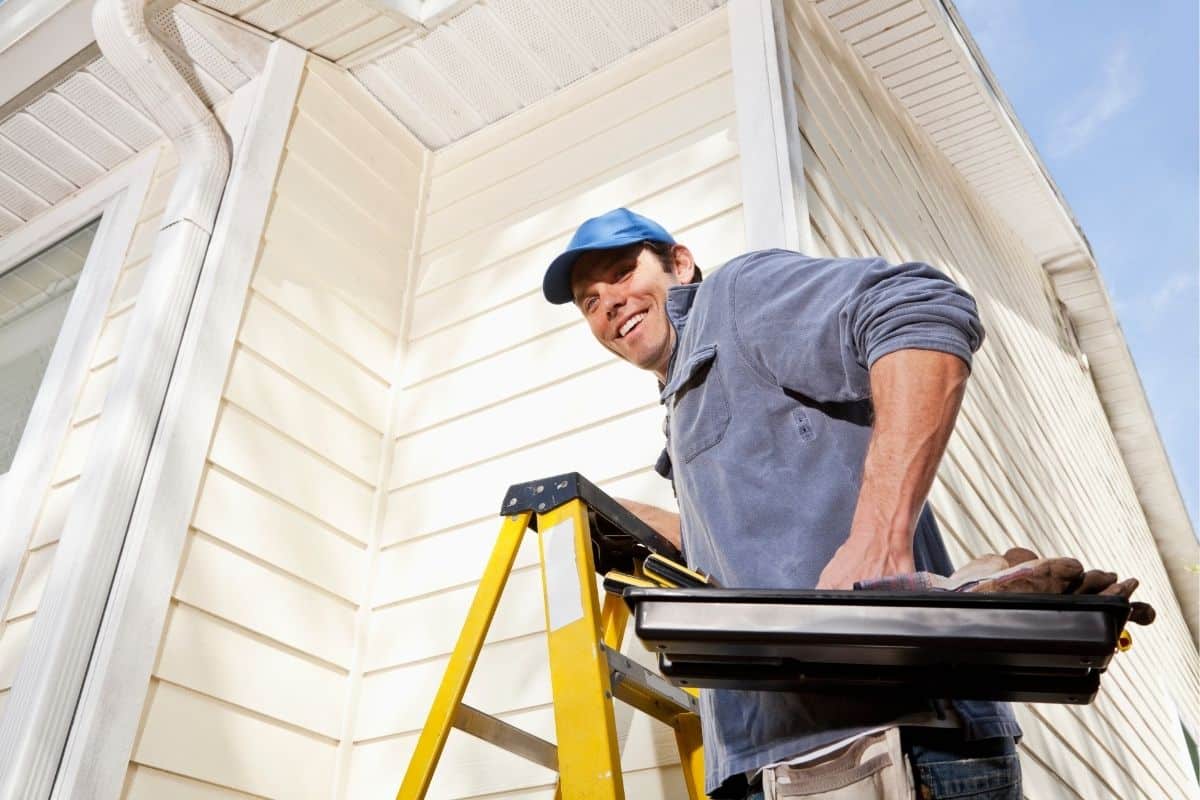
Hailstorms in Minnesota can occur suddenly and can cause significant damage to your home’s exterior. One of the most affected areas is the siding, your home’s first line of defense. If you have recently experienced severe weather, you may wonder whether your siding needs replacement after a hailstorm or if a repair will suffice. Recognizing the signs of damage early and taking action can help prevent water intrusion, energy loss, and more costly repairs in the future.
Why Hailstorm Damage Should Never Be Ignored
After a hailstorm, focusing on roof damage and overlooking the siding is easy. However, siding is critical in keeping moisture out and maintaining your home’s energy efficiency. Even minor cracks or dents can let in water, insects, or cold air, making repairing holes in vinyl siding a crucial consideration for homeowners. That’s why checking your siding is as important as inspecting your roof after a storm.
Our team sees firsthand how hail damage can shorten the lifespan of siding and lead to unexpected issues. We encourage homeowners to schedule inspections quickly and make informed decisions about whether repairs or full replacement are necessary.
Sign #1: Cracks, Splits, and even Holes
One of the most evident signs your siding needs replacement after a hailstorm is visible cracking, or worse, holes. Hail impacts with enough force to cause splits or fractures in vinyl, aluminum, or fiber cement siding. These cracks may be small initially, but they allow moisture to penetrate behind the panels, potentially damaging your insulation and wall structure.
Why You Shouldn’t Ignore These Issues
Even a hairline crack can expand, especially when exposed to fluctuating temperatures or additional rain. Inspect your siding closely and have a professional evaluate whether the damage is cosmetic or structural. Addressing these issues promptly and, if replacement is needed, choosing from the best siding materials for Minnesota homes will ensure long-term protection against future weather challenges.
Sign #2: Dents and Soft Spots
Hail often leaves behind dents, especially on aluminum and metal siding. These dents might not cause immediate leaks, but they compromise the look of your home and can weaken the integrity of the siding over time.
Soft Spots Indicate Hidden Moisture
If you press on a section of siding that feels soft or spongy, water has likely infiltrated behind it. This is a sign the siding has lost its protective seal and should be replaced to prevent mold or rot.
Sign #3: Discoloration or Fading
Another typical result of hail impact is discoloration. If certain panels look faded, spotted, or inconsistently colored, it may be because the protective coating has been stripped away. This affects more than appearance—it leaves the siding vulnerable to UV damage and premature aging.
Appearance Reflects Protection
Discoloration is more than just a cosmetic issue. It often indicates that the top protective layer has worn off, which can accelerate material breakdown and reduce weather resistance. For homeowners in Minnesota, James Hardie Siding provides a superior siding option. This ensures that homes maintain their vibrancy with minimal maintenance.
Sign #4: Loose or Warped Panels
Strong winds paired with hail can loosen or warp siding panels. If the panels don’t sit flat against your home, they may no longer provide a tight seal. Loose siding creates gaps where rain and pests can enter.
Misaligned Panels Can’t Be Ignored
If your siding looks uneven or shifts when touched, it indicates that something underneath has been damaged or loosened. This often means the panel system has failed in that area and needs a full replacement.
Sign #5: Mold, Mildew, or Moisture Inside the Home
When hail damages your siding and creates entry points for water, the effects don’t always appear outside. You may notice mold on interior walls, a musty smell, or bubbling paint indoors—all signs that moisture is getting in where it shouldn’t.
Interior Symptoms Point to Exterior Problems
If you notice any changes inside your home after a hailstorm, they may indicate unseen siding damage. In this case, you will likely need to replace the siding to restore your home’s protection and air quality.
The aftermath of a hailstorm can leave a home vulnerable to a range of issues that often go unnoticed at first glance. Symptoms such as mold on interior walls, a musty smell, and bubbling paint indicate that there may be underlying damage to the siding. These interior changes are not simply cosmetic; they signal the potential for significant structural concerns that could compromise the home’s protection and air quality. Ignoring these signs could lead to more extensive damage and costly repairs, which underscores the importance of having functional siding options you can rely on to prevent such issues.
Stay Ahead of Siding Problems with Timely Action

Hail damage is more than a cosmetic concern; it puts your home’s structure, insulation, and energy efficiency at risk. Knowing the signs that your siding needs replacement after a hailstorm helps you take action quickly and avoid long-term damage. A professional inspection is the best way to protect your investment, whether the issues are visible or hidden.
Don’t wait to address the damage if a recent hailstorm hits your home’s siding. Contact Advantage Construction today to schedule a thorough inspection and expert consultation. Our experienced team will evaluate the condition of your siding and recommend the right solutions to restore your home’s exterior safely and efficiently.
